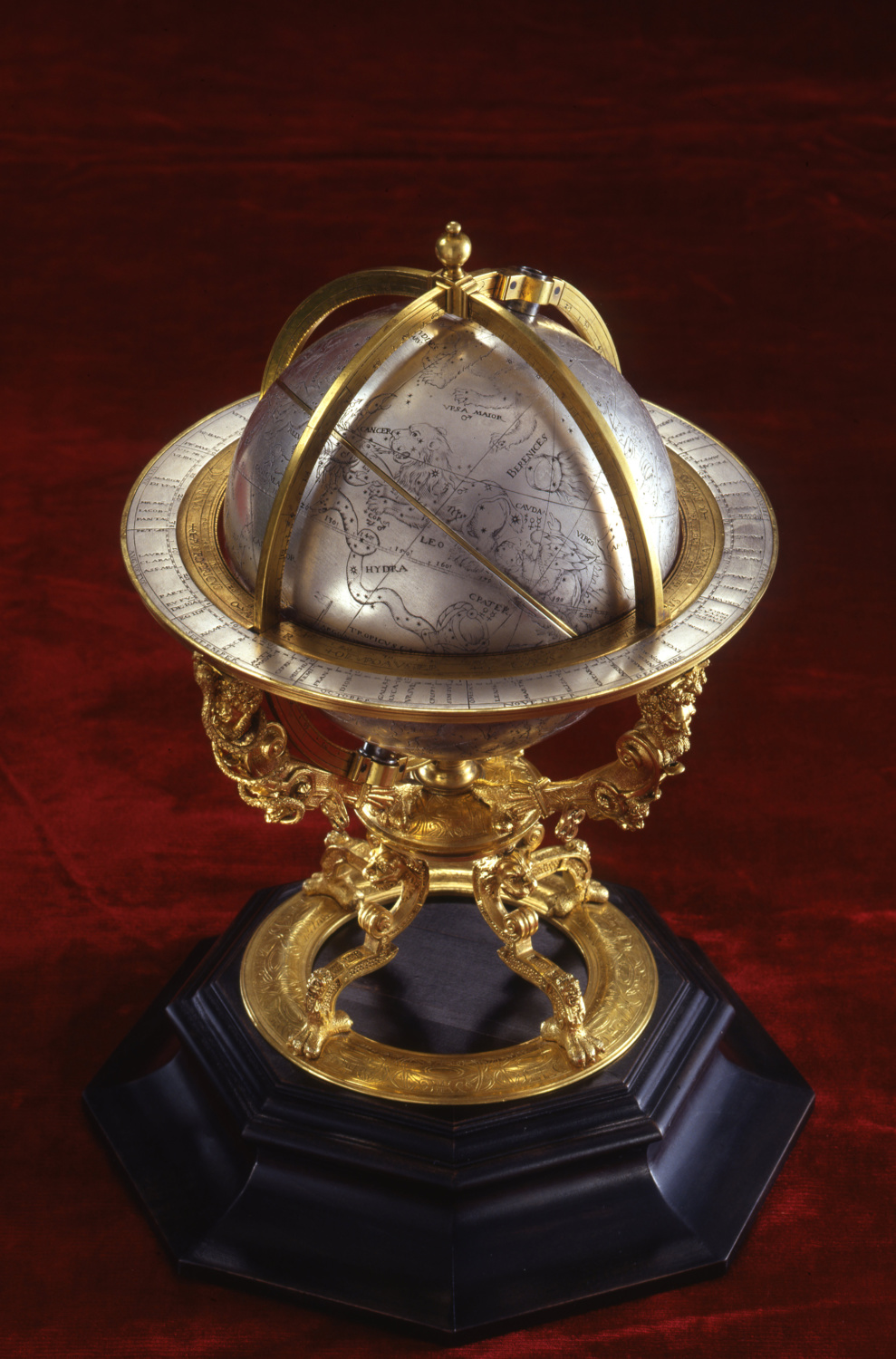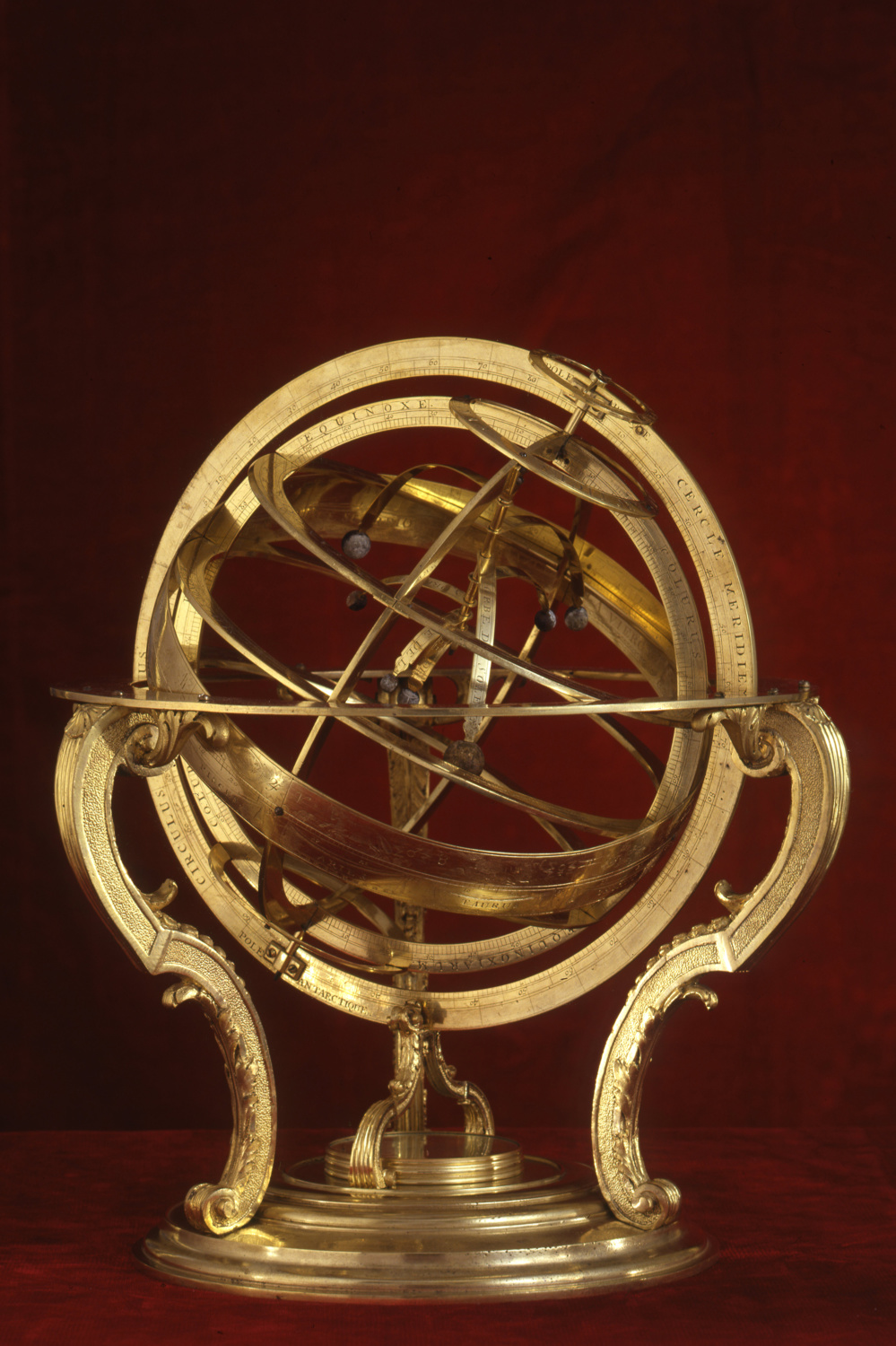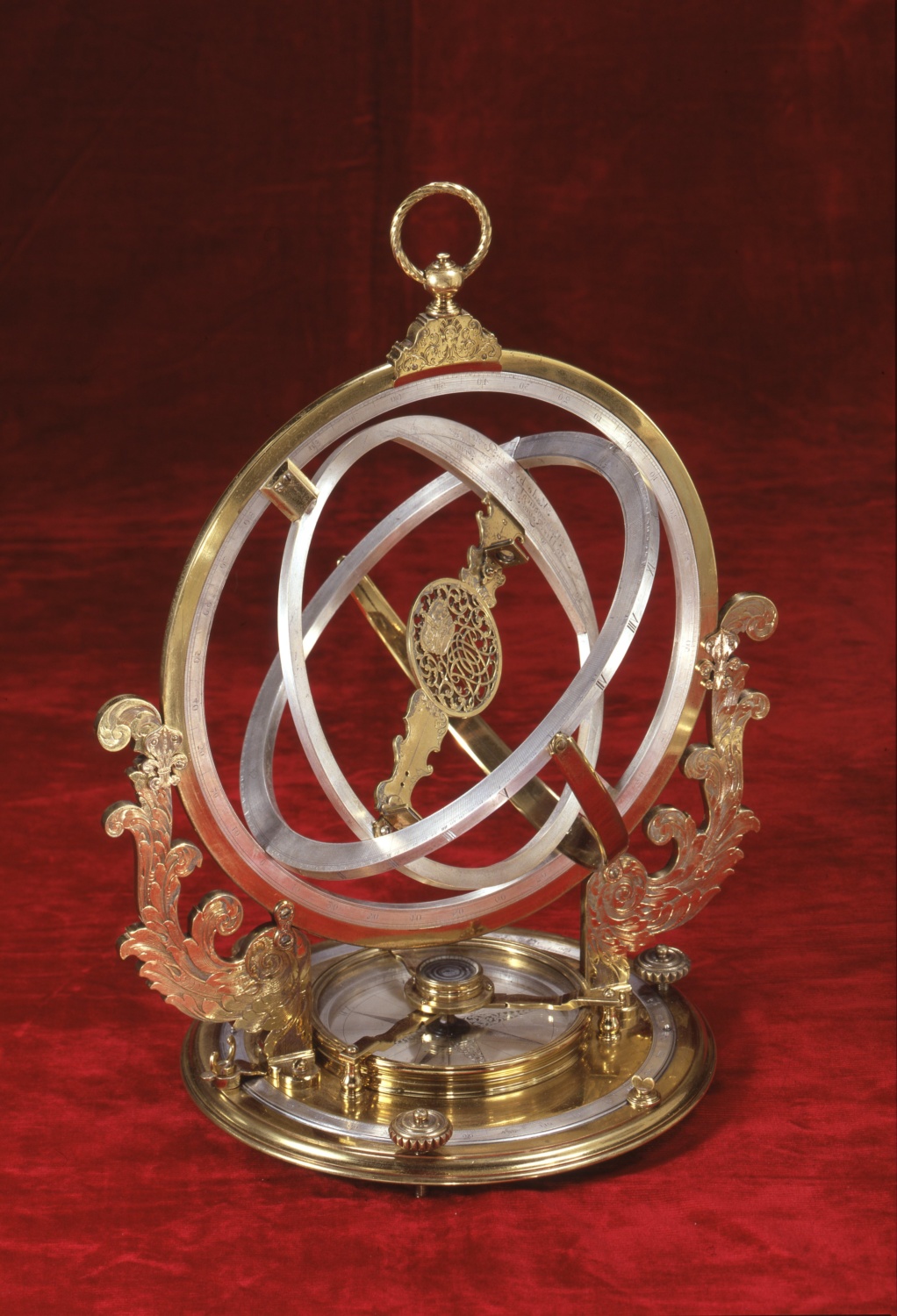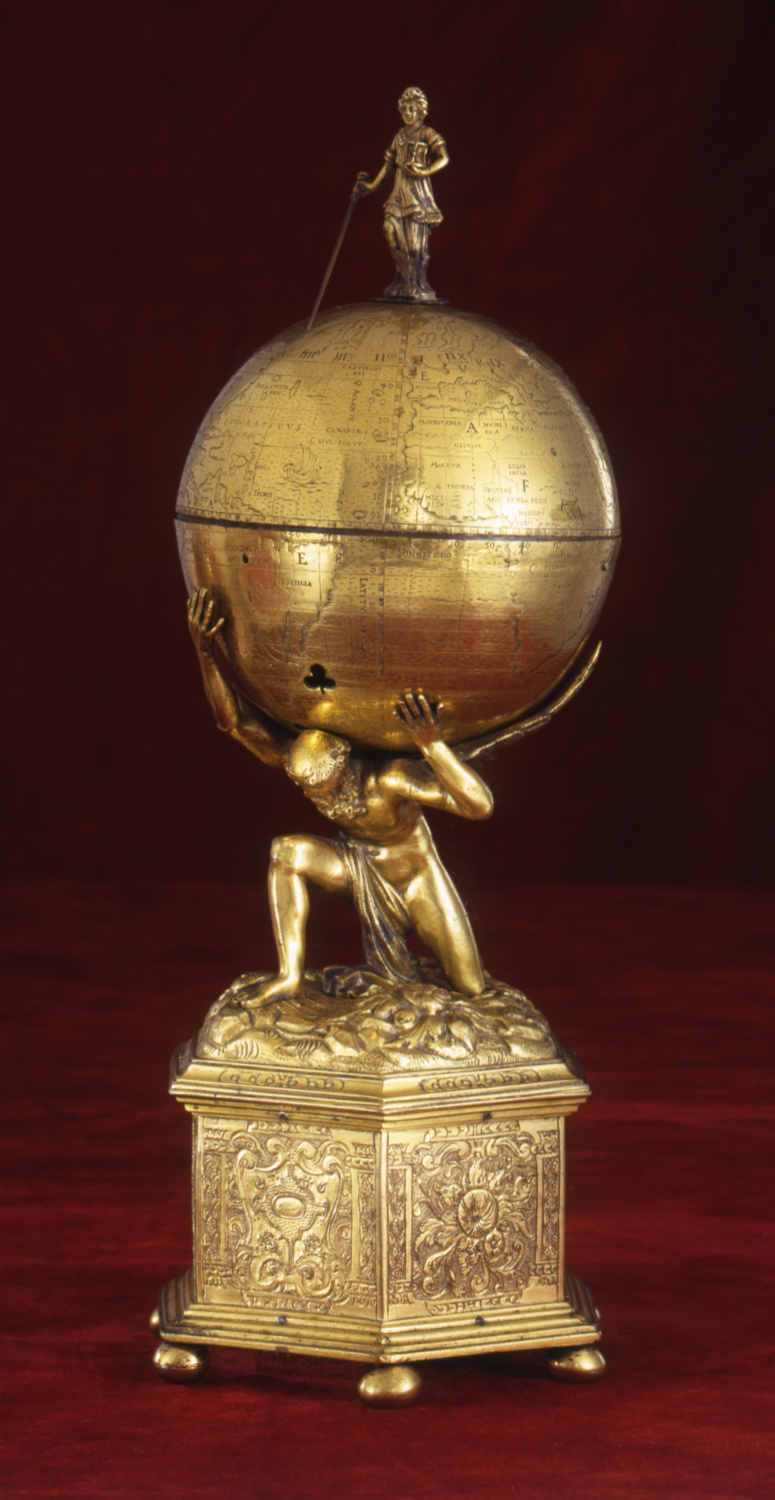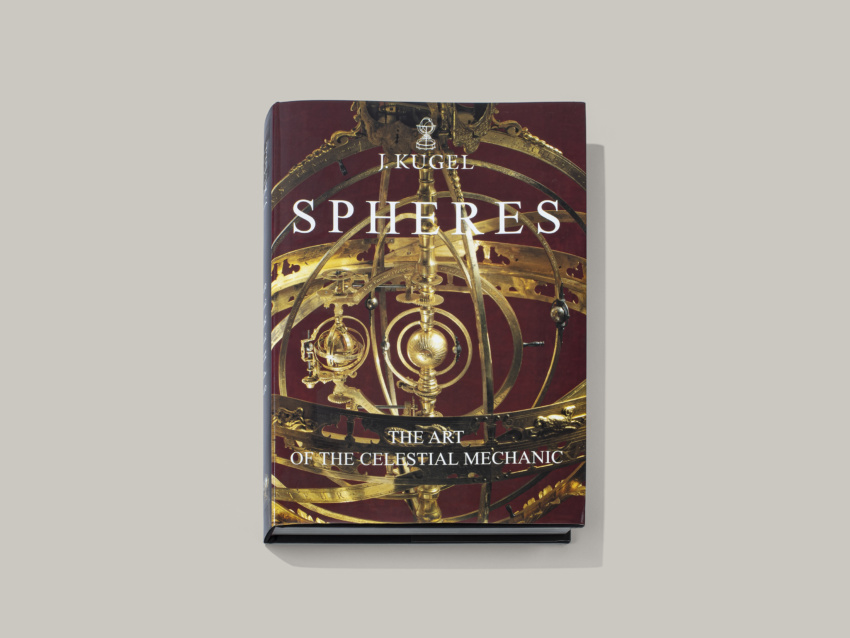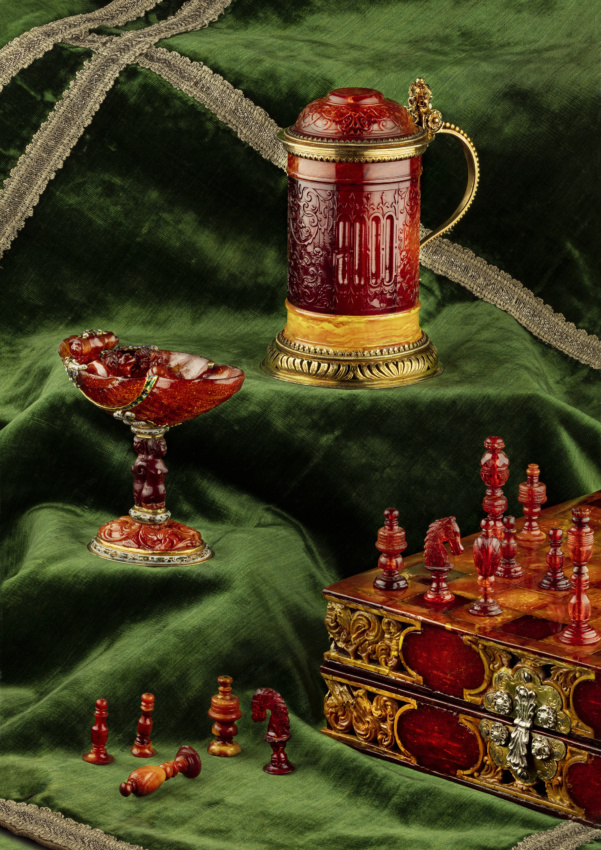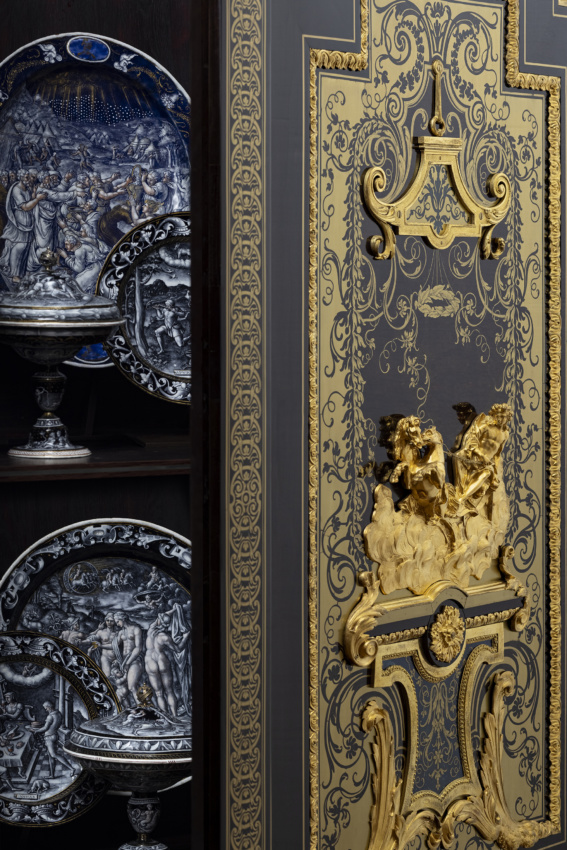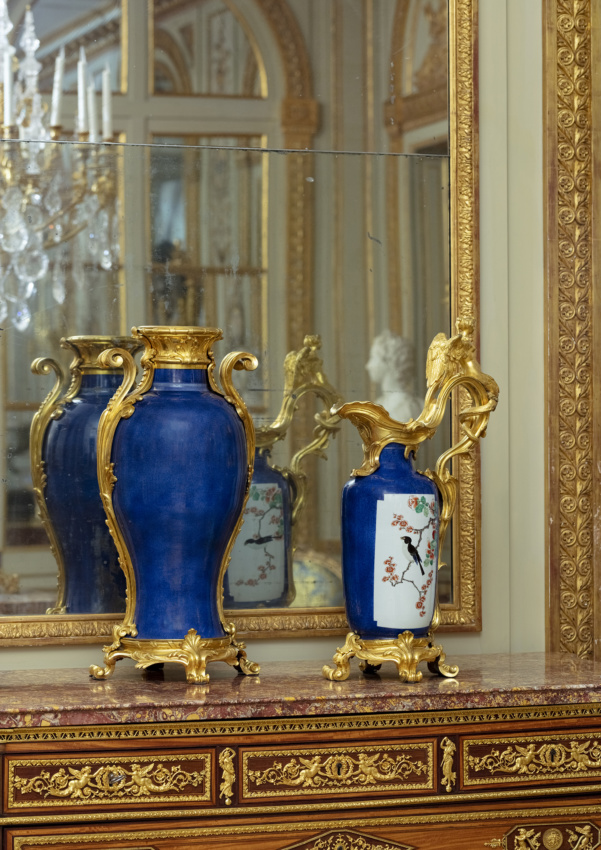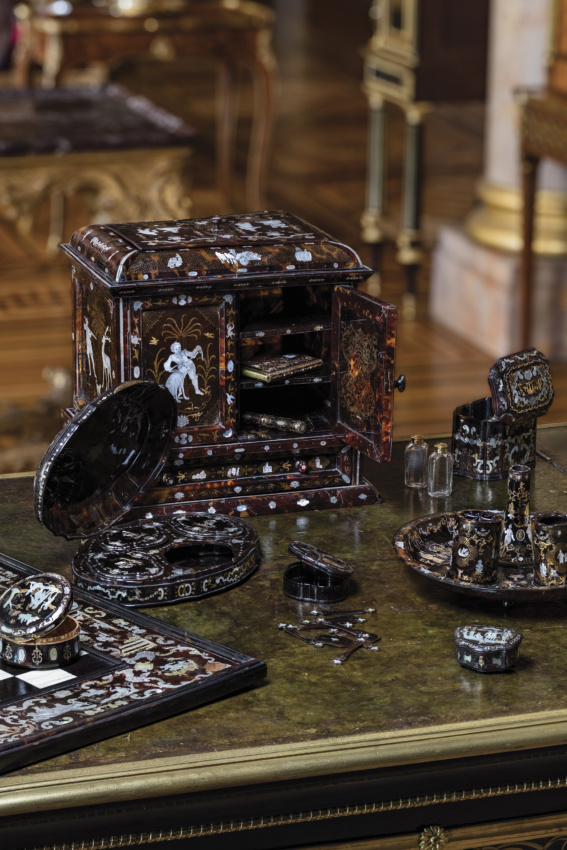In 2002, Galerie Kugel held an exceptional exhibition, the first commercial one of its kind, gathering over fifty globes and spheres conceived in precious materials such as silver, rock crystal, ivory and gilt bronze.
Dating from the roman era to the early 19th century, but with a concentration from the Renaissance period, they represented the highest achievement in the understanding and representation of the universe and were for their time, the equivalent to the computer of our modern era. At the crossroad of luxury and science, these precious objects were conceived by the best mathematicians and clock and instrument makers of France, Italy, Germany or Flanders, for their princes or enlightened patrons.
The diagram of the universe, proposed by the Greek astronomer Claudius Ptolemy in the 3rd century A.D. depicts the earth in the centre surrounded by nine crystalline spheres carrying the sun, the planets and the outer one the stars. It remained unrivalled until the heliocentric hypothesis of Nicolas Copernicus in the 16th century. Ptolemy also explains how to achieve a celestial globe and a model of the universe by the means of concentric rings or “armillae” revolving around a central globe, known as an armillary sphere. With the advancements in horology at the beginning of the Renaissance, it became easy to add a mechanical movement to the different bodies. At the same time the discoveries of new lands led to the conception of terrestrial globes.
